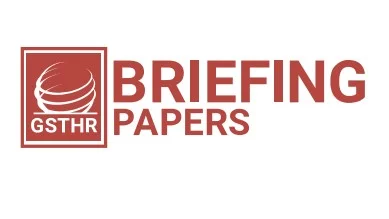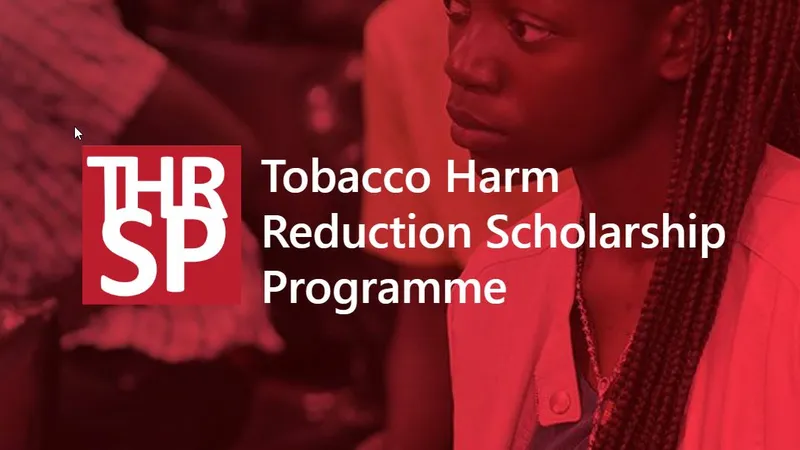GSTHR Press release
Friday 10 November 2023
New GSTHR Briefing Paper focuses on tobacco harm reduction consumer advocacy groups - and notes their exclusion from COP10
- Consumer advocacy groups play vital role in maintaining access to safer nicotine products to reduce tobacco-related harm around the world;
- Formed by people with experience of using safer nicotine products to quit smoking, they want people who still smoke to have the same opportunities;
- These organisations have achieved significant positive outcomes for smokers and SNP users despite being poorly funded.
While the future of tobacco and smoking will be discussed at the tenth Conference of the Parties (COP10) to the Framework Convention on Tobacco Control (FCTC) in Panama next year, consumer organisations advocating for tobacco harm reduction (THR) will be absent.
This meeting will influence the future direction of international tobacco control policies and is expected to result in moves to reduce access to safer nicotine products (SNP) such as nicotine vapes, heated tobacco products, snus and nicotine pouches. But COP10 will lack any insight from the people who use SNP as groups representing consumers are not allowed to take part in proceedings.
The Global State of Tobacco Harm Reduction (GSTHR)'s latest Briefing Paper explores the development, role and importance of consumer advocate groups in tobacco harm reduction. Available in 12 languages, this Briefing Paper shows these organisations play a critical role in ensuring SNP are available as alternatives for all those who use high-risk tobacco products, including 1.1 billion people who smoke. They are run by people who have experience of using safer nicotine products to quit smoking and are driven by a desire to make sure all those who smoke have the same opportunities.
These groups know what consumers need, they know how the products work, and they know how consumers use the products. This knowledge is invaluable to people who smoke, who could improve their health by switching to SNP.
The expertise consumer advocates can share is critical for scientists, regulators and politicians. It should be central to discussions at national or international level about the future availability and regulation of SNP. The absence of consumer perspectives from COP10 will hamper collective efforts to bring an end to the smoking epidemic which claims 8 million lives each year.
While consumer advocacy groups are not admitted to COP10, civil society organisations who actively campaign against tobacco harm reduction are approved to participate, including the Campaign for Tobacco-Free Kids, the Truth Initiative and Vital Strategies.
As argued in a previous GSTHR Briefing Paper, people who smoke and people who use safer nicotine products have the right to health and the right to tobacco harm reduction. This means that they should have the right to choose to use products which improve their health if they cannot or do not want to stop using nicotine. When proposals threaten to restrict access to these products, consumer advocacy groups step in to voice opposition, and to campaign for appropriate regulation.
But these organisations have only been around a short time. While the Consumer Advocates for Smoke-free Alternatives Association (CASAA), founded in 2009 in the USA, was one of the first organisations to be set up, more than half of the 54 groups identified in a Global State of Tobacco Harm Reduction study have only been operating since 2016.
They are fragile grassroots groups that are overstretched and under-resourced. Indeed, during the 12 months prior to the study, the total funding for all of the groups surveyed was only US$309,810. None of this money came from tobacco or pharmaceutical companies, despite oft-repeated allegations from opponents of tobacco harm reduction. This sum is in stark contrast to the amount of money available to organisations that campaign against tobacco harm reduction, such as the Campaign for Tobacco Free Kids, which received US$160 million from Bloomberg Philanthropies in 2019 to campaign against flavours in nicotine vapes around the world over three years.
Despite the lack of funding, tobacco harm reduction consumer advocacy organisations are able to showcase a wide range of important actions and achievements. These include engaging the media, gaining print and broadcast media coverage, making submissions to consultations by government and regulatory and advisory organisations, participation in public hearings, hosting webinars and face-to-face meetings, contacting parliamentarians, helping new groups to launch, running social media campaigns, organising protests, pursuing legal challenges, developing contacts with government ministries, and contributing to the development of national e-cigarette standards.
Jessica Harding, Director of External Engagement at Knowledge·Action·Change, commented: “From the very early days of simply sharing information on products with peers who hoped to quit smoking, through to the emergence of more organised advocacy efforts, consumers have been central to the development of tobacco harm reduction. Consumer advocacy groups play a vital role in maintaining access to safer nicotine products throughout the world and, despite the many obstacles they face, their achievements are impressive.”
Professor Gerry Stimson, on behalf of the GSTHR project, said: “People who use safer nicotine products and people who smoke are significantly affected by policy responses to tobacco and nicotine, broadly described as ‘tobacco control’. They are also the people who would most benefit from tobacco harm reduction. As in other comparable areas of public health, there must be a recognition of the contribution consumer advocacy groups can make to inform decision-making at meetings such as COP10. Their experiences are testament to the potential of harm reduction, and they should be heard.”
ENDS
Contact: For further information, please contact either Oliver Porritt at [email protected] or on +44 79 30 27 99 16 or Ruth Goldsmith at [email protected] or on +44 78 01 84 51 92.
Notes to editors: This Briefing Paper is available to download in English, Arabic, Chinese (Mandarin), French, German, Hindi, Indonesian, Japanese, Polish, Portuguese, Russian and Spanish (with Swahili coming soon).
About us: Knowledge·Action·Change (K·A·C) promotes harm reduction as a key public health strategy grounded in human rights. The team has over forty years of experience of harm reduction work in drug use, HIV, smoking, sexual health, and prisons. K·A·C runs the Global State of Tobacco Harm Reduction (GSTHR) which maps the development of tobacco harm reduction and the use, availability and regulatory responses to safer nicotine products, as well as smoking prevalence and related mortality, in over 200 countries and regions around the world. For all publications and live data, visit https://gsthr.org
Our funding: The GSTHR project is produced with the help of a grant from the Foundation for a Smoke-Free World, a US non profit 501(c)(3), independent global organization. The project and its outputs are, under the terms of the grant agreement, editorially independent of the Foundation.

